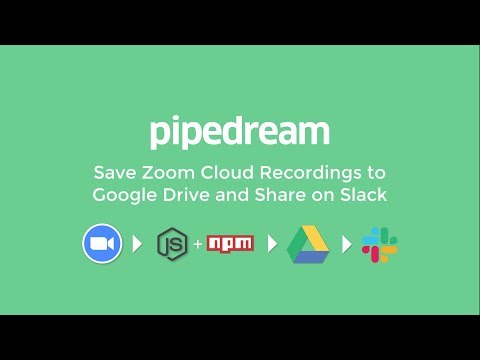What do you want to automate
with Pushbullet and Zoom?
Prompt, edit and deploy AI agents that connect to Pushbullet, Zoom and 3,000+ other apps in seconds.
Trusted by 1,000,000+ developers from startups to Fortune 500 companies
Popular Ways to Connect Pushbullet with Zoom#
Popular Pushbullet and Zoom Triggers#
Emit new event each time a meeting is created where you're the host
Emit new event each time a meeting starts where you're the host
Emit new event each time a new recording completes for a meeting or webinar where you're the host
Emit new event each time a meeting ends where you're the host
Emit new event each time a meeting is updated where you're the host
Popular Pushbullet and Zoom Actions#
Overview of Pushbullet#
Pushbullet acts as a bridge, connecting your devices with push notifications and file sharing capabilities. By leveraging the Pushbullet API on Pipedream, you can automate notifications for a host of events, enabling real-time alerts on your phone, browser, or desktop. Whether you're monitoring server uptimes, tracking sales, or simply staying on top of to-do lists, integrating Pushbullet with other services via Pipedream workflows can streamline your notification management and data sharing tasks.
Connect Pushbullet#
import { axios } from "@pipedream/platform"
export default defineComponent({
props: {
pushbullet: {
type: "app",
app: "pushbullet",
}
},
async run({steps, $}) {
return await axios($, {
url: `https://api.pushbullet.com/v2/users/me`,
headers: {
Authorization: `Bearer ${this.pushbullet.$auth.oauth_access_token}`,
},
})
},
})
Overview of Zoom#
The Zoom API lets you tap into a rich set of functionalities to enhance the video conferencing experience within your own app or workflow. With the Zoom API on Pipedream, you can automatically create meetings, manage users, send meeting notifications, and more, orchestrating these actions within a broader automation. This allows for seamless integration with other services, enabling both data collection and action triggers based on Zoom events.
Pipedream workflows allow you to run any Node.js code that connects to the Zoom API. Just create a new workflow, then add prebuilt Zoom actions (create a meeting, send a chat message, etc.) or write your own code. These workflows can be triggered by HTTP requests, timers, email, or on any app-based event (new tweets, a GitHub PR, Zoom events, etc).
Connect Zoom#
import { axios } from "@pipedream/platform"
export default defineComponent({
props: {
zoom: {
type: "app",
app: "zoom",
}
},
async run({steps, $}) {
return await axios($, {
url: `https://api.zoom.us/v2/users/me`,
headers: {
Authorization: `Bearer ${this.zoom.$auth.oauth_access_token}`,
},
})
},
})
Related Videos#
